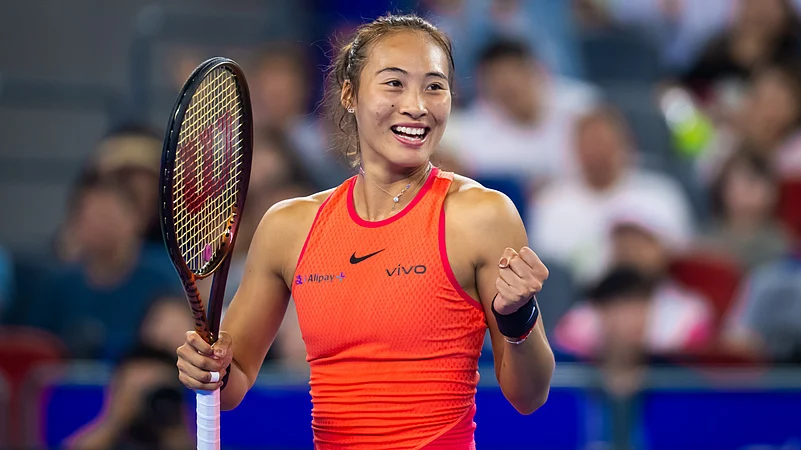Zheng Qinwen is through to the Wuhan Open final after a straight-sets win over Wang Xinyu. (More Tennis News)
In a historic, first-ever all-Chinese semi-final at a WTA 1000 event, Zheng reached her first such final, prevailing 6-3 6-4.
There was little to separate the two in the opening exchanges – just as Zheng edged in front with the first break in the fourth game, Wang responded, levelling the scores back at 3-3.
However, Zheng rallied, successfully defending a break point on her way to winning the last three games in a row to take the first set.
Wang faced 12 break points throughout the match, but failed to defend one in the second-set opener, before protecting three as she took a 2-1 lead.
Despite her fight, the Olympic gold medallist dug deep once more, getting two back-to-back breaks in order to clinch clinching the match.
She will face Aryna Sabalenka, who has never lost a match in Wuhan, in the final on Sunday.
Data Debrief: Home favourite
It has been a banner year for Zheng, who is also still in with a chance of qualifying for the WTA finals. Including the Olympics, she has reached the final of four events during 2024, the most she has managed during a single season.
Only Qiang Wang and Shuai Peng (four each) have made more WTA level finals on Chinese soil than Zheng (three, Zhengzhou and Zhuhai in 2023 and Wuhan in 2024) among Chinese players in the Open Era.
In fact, Zheng is just the second Chinese player to reach the final of a WTA 1000 event since the introduction of the format in 2009, after Li Na.

















